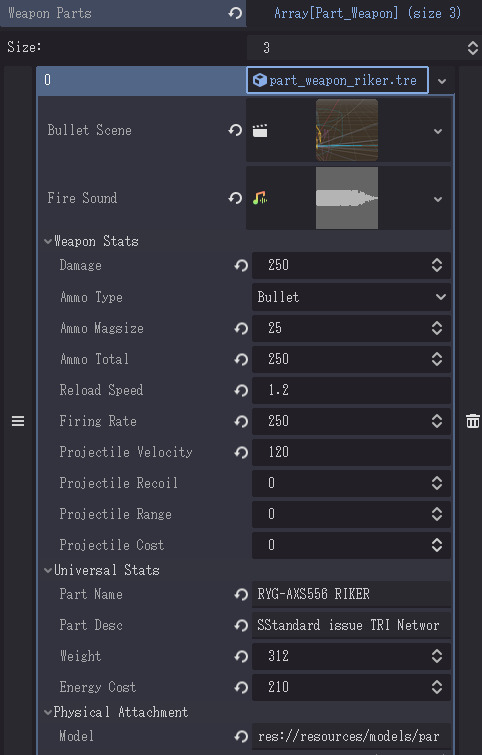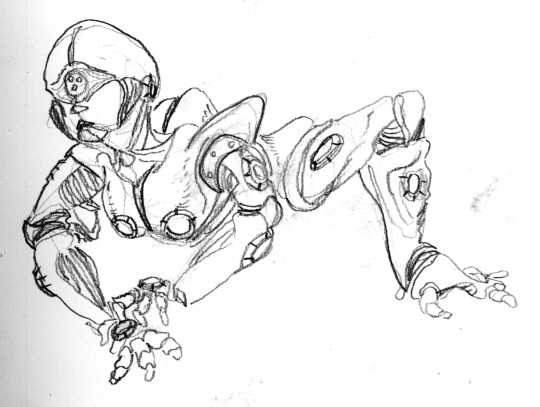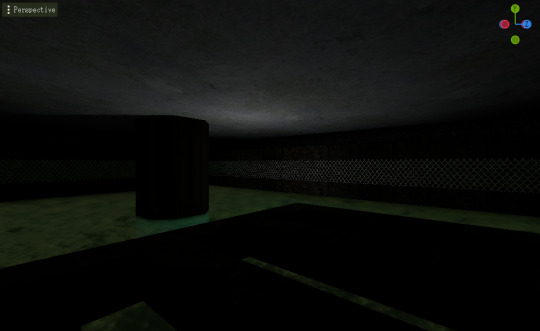multimedia artist and game developer(this blog is mainly for technical game dev stuff)
Don't wanna be here? Send us removal request.
Text
Neonic Complex - New movement and art designs
Here I'm demonstrating the new Burst movement, which injects velocity over a few frames instead of instantly applying it. This makes boosters much more configurable - e.g; heavier boosters that slowly build up speed, or aerial-focused boosters that can take to the air more efficiently. I intend for top speed to be affected by the overall weight of your build, and acceleration depends on your frame's "aerodynamics". The more aerodynamic your frame is, the faster you accelerate.
The mech designs here are done by https://bsky.app/profile/waterbucket66.bsky.social
7 notes
·
View notes
Text
Godot 4 surface material sampling using FuncGodot
Useful for footstep sounds, particles, and more
Here's code for a helper utility (raycast only, kinematic collisions do not return a face index)

7 notes
·
View notes
Text
SWORDWORLD is now available
Created for mehu jam 5 (48h)
6 notes
·
View notes
Text
Spirit Ocean - animation update
Still experimenting with the 3D HUD. May render it in 2D and then unproject it
11 notes
·
View notes
Text
State machine design pattern with decoupled observer entity
1 note
·
View note
Text
GeoStrike new update WIP
4 notes
·
View notes
Text
Neonic Complex - Recoil control system
Weapon recoil is independent of each arm. Your arms part influence how much recoil is suppressed, and how quickly it dissipates.
Stronger weapons have higher recoil. If they're very powerful, you'll need good overall stability to keep your boosters from getting stunned.
8 notes
·
View notes
Text
Neonic Complex - Part selling
Parts can be bought and sold on the market
Some parts are unlocked as rewards
4 notes
·
View notes
Text
Carrot Caliber - Parts Resource System
This is a very early look at Bio Mech loadout in Carrot Caliber.
To achieve this level of character customization, I used Godot's resource system to build a data structure that my parts can use.
Every part inherits from the same resource. The characters have a PartsManager node that reads in this data, and applies their appropriate stats and models.

Being able to iterate not only on new weapons in the editor, but bullets, and even movement models (such as weight curves, booster acceleration, etc) enables me to make new parts in a matter of minutes.
16 notes
·
View notes
Text
TASK FORCE RABBIT is no more...
From its ashes, rises a new form of cybernetically enhanced combat
MORE TO COME SOON!
17 notes
·
View notes
Text
Neonic Acolyte model, work in progress
A bipedal caster type enemy. Part of a cult that found both refuge and power in an ancient aqueduct.
6 notes
·
View notes
Text
Early Centria Sewer level walkthrough
4 notes
·
View notes
Text



Neonic Watchdog for Spirit Ocean, concept sketch to final
23 notes
·
View notes
Text
Baked Lightmaps Test


Ever since I started making levels for games like TF2 and Garry's Mod, I've always had an appreciation for pre-baked lighting calculations. During the early stages of Spirit Ocean's development, I looked into baked lighting as it'd be the most efficient (and authentic) way to light my scenes. There was just one problem, though.
The light baking in Godot 3.5 was... slow. Not because of the engine itself, but because of how I had my levels set up.
The way baked lightmaps work basically involves layering a new texture on top of the existing level geometry. If the level geometry's texture is too big (caused by parts of the level being too big), the lightmap can't calculate properly. What Qodot (the map file parser) is expecting is for each map piece to be separated into its own layer, so each room/object is its own mesh that can be lit individually.
After figuring that out, its just a matter of lighting entities. Currently I'm using Godot 4's SDFGI exclusively on entities, but I'm reading it can cause a drastic performance hit. Its a real time calculation, and ideally I'd use the prebaked lightmaps instead, but I can't seem to get that working. The water shader is a completely different story.
8 notes
·
View notes
Photo

Gamer Mode
(This is a test for postybirb!)
Posted using PostyBirb
1 note
·
View note
Text
Prototype of a new level
12 notes
·
View notes
Text
A test level for Task Force Rabbit.
19 notes
·
View notes